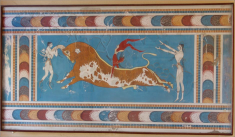Speaker
Description
Heavy quarks are mainly produced at the early stages of relativistic heavy-ion collisions before the formation of the quark-gluon plasma (QGP). Heavy quarks then experience the entire evolution of the QGP medium, and thus are ideal probes of the QGP properties. Measuring the open heavy flavor hadrons and their decayed electrons with different observables provides information for different stages of heavy-ion (A+A) collisions, e.g. directed and elliptic flows for the initial conditions and diffusion, nuclear modification factor for the energy loss, and relative yields of various hadrons for the hadronization. Measuring the suppression of heavy quarkonia production in A+A collisions was proposed as an evidence of the QGP formation, and believed to be sensitive to the medium temperature. In p+p collisions, measurement of quarkonia production helps in understanding both the perturbative (hard scattering) and non-perturbative (evolution to the quarkonium bound states) aspects of Quantum Chromodynamics. Additionally, studying the production of heavy flavor hadrons and quarkonia in p(d)+A collisions can be used to quantify the Cold Nuclear Matter effects, which provide critical inputs for interpreting the observed modifications to the heavy flavor production by the QGP.
The STAR Heavy Flavor Tracker, operated from 2014 to 2016, provides excellent track pointing resolution, enabling reconstruction of short lived open heavy flavor hadrons via their hadronic decays. The STAR Muon Telescope Detector operated since 2013 allows reconstruction of heavy quarkonia via dimuon decay channel. In this talk, we will present an overview of recent STAR heavy flavor measurements. We will show results on production of open charm hadrons and electrons from heavy flavor hadron decays in Au+Au collisions. Furthermore, we will report measurements of $J/\psi$ and $\Upsilon$ in p+p, p+Au, and Au+Au collisions, and the $J/\psi$ in jet production in p+p collisions.
Details
Mr. Te-Chuan Huang, National Cheng Kung University, Tainan city, Taiwan
| Is this abstract from experiment? | Yes |
|---|---|
| Name of experiment and experimental site | STAR experiment |
| Is the speaker for that presentation defined? | Yes |
| Internet talk | Yes |
